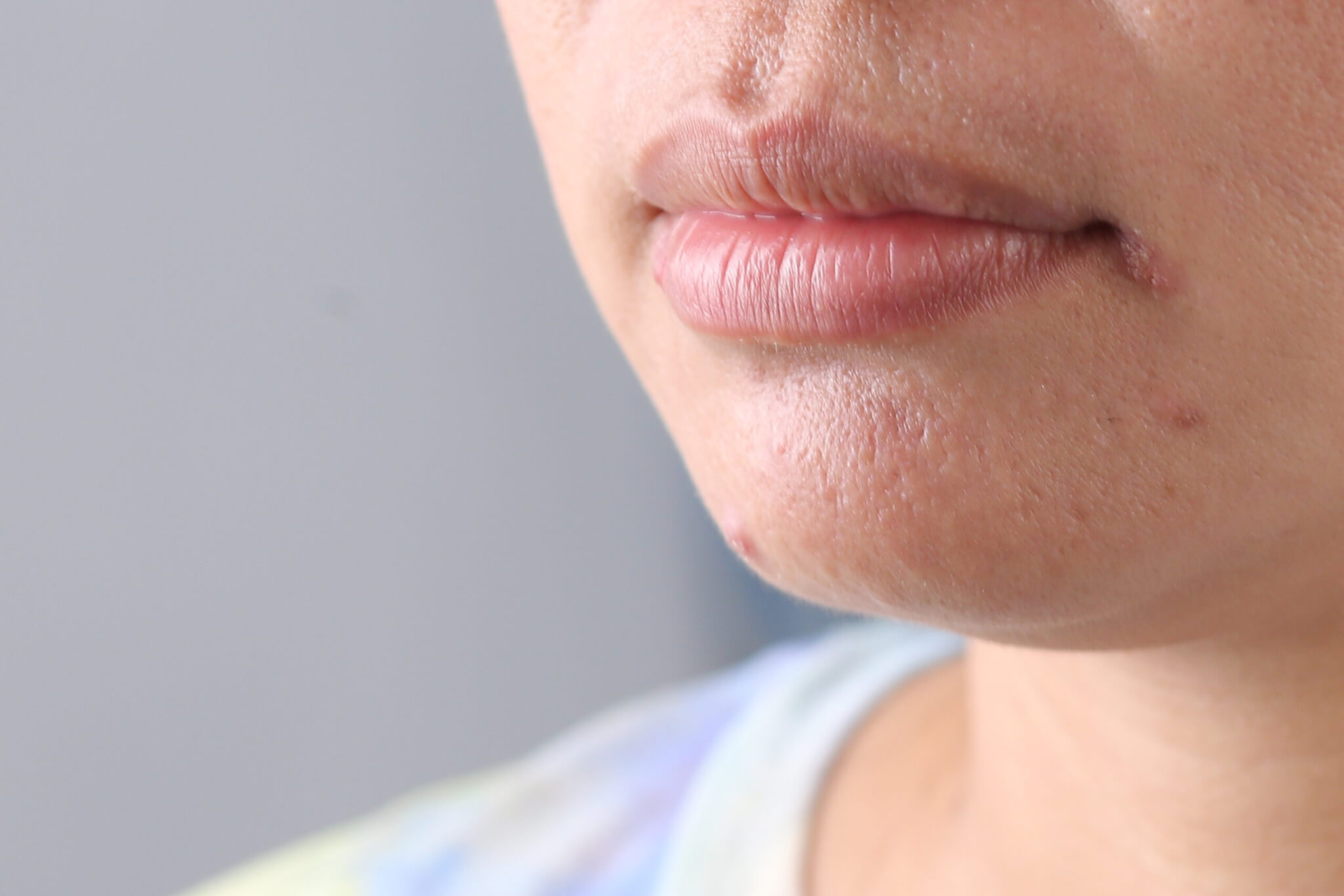Angular cheilitis is a skin condition that impacts the area at the corners of the mouth, causing a variety of uncomfortable symptoms. According to Dr. Howard Rubin of U.S. Dermatology Partners North Dallas, “Angular cheilitis is a relatively common condition that impacts people of all ages. While it’s often uncomfortable, the good news is that it’s typically not a serious condition, and it clears up relatively quickly. If you’re concerned about angular cheilitis symptoms, your dermatologist can help you repair damaged skin and start looking and feeling your best.” If you’d like to learn more about angular cheilitis, Dr. Rubin will explain the symptoms, causes, and treatment options in this blog.
Understanding Angular Cheilitis
Angular cheilitis, referred to here as AC, is a skin condition that leads to inflammation in the labial commissures, the corners of the mouth. It commonly occurs when excess skin in the corners of the mouth allows saliva to pool. As saliva accumulates and dries, it causes skin dryness and cracking. Without proper treatment, this condition can lead to infections and other more serious skin health concerns.
Causes and Contributing Factors
The direct cause of angular cheilitis is the consistent exposure of thin, sensitive skin to pooling saliva. According to Dr. Rubin, “Infection often plays a role. Yeast (Candida) and/or bacteria (Staph, Strep) can be primary causes, or these organisms can be a secondary symptom of AC. Other predisposing factors can include exaggerated skin creases in the corners of the mouth due to individual anatomy, poorly fitting dentures, aging, loss of soft tissue, frequent lip-licking or drooling, local irritation, nutritional deficiencies, and eczema.”
While anyone can develop AC, Dr. Rubin says, “Angular cheilitis (AC) can be seen relatively commonly in both men and women but it is more frequent in the elderly. In this population, denture wearers and those with comorbidities, such as diabetes, poor nutrition, and thinner, drier skin, may be more likely to develop AC.”
Symptoms and Differentiation
AC may be misdiagnosed as severely dry, chapped lips or cold sores. While dry skin and painful sores are both symptoms of AC, there are distinct differences when compared to chapped lips and cold sores. According to Dr. Rubin, “Chapped lips, cold sores, and AC may all be seen more frequently in the winter and colder, drier climates. Angular cheilitis starts in the corners of the mouth and may lead to fissures or cracks in the affected areas. Severely chapped lips are more often noted on the body of the lip. Cold sores may develop in the corners of the mouth, but it is usually only in one. AC is more often bilateral, impacting both sides of the mouth.”
Is Angular Cheilitis Contagious?
Angular cheilitis is often confused with cold sores, which are contagious, Dr. Rubin says, “Although infection may be a component of angular cheilitis, it is not considered contagious.”
Treatment Options
Both over-the-counter products and prescription angular cheilitis treatments can be beneficial in addressing symptoms. Explore more about the options below.
Over-the-Counter Products & Home Remedies
On preventing AC, Dr. Rubin says, “Excess saliva is often associated with AC. This saliva in turn contributes to irritation, dryness, and/or breakdown of skin in this sensitive area. Keeping the area moist with a barrier cream (such as a diaper cream) or bland emollient moisturizer can be very helpful. In addition, over-the-counter cortisones used for a short period of time and over-the-counter antifungals can be helpful. Sometimes, even mixing a small amount of over the counter 0.5% or 1% hydrocortisone cream and an antifungal cream, such as Lotrimin, together and applying sparingly twice daily for five days can be very helpful.”
Professional Treatment Recommendations
When over-the-counter AC treatments aren’t working, Dr. Rubin may recommend:
- Prescription topical treatments – like antifungals, antibacterials, and steroids.
- Prescription oral medications – antibiotics or antifungals may be prescribed to be taken orally if infection develops.
- Dental treatments – when the anatomy of the mouth increases risks for angular cheilitis, orthodontic or dental treatment may be recommended to reduce drooling and prevent saliva from poo
Preventive Measures
When it comes to prevention, Dr. Rubin says, “Excess saliva often leads to maceration in the affected areas. Maceration is a form of moisture-related skin damage that causes pain, tenderness, and burning. Limiting this with barrier ointments (e.g. lip balms, petrolatum, and Aquaphor) can help prevent AC and minimize its recurrence. Other helpful measures can include avoiding tobacco, making sure dentures are fitted properly, avoiding licking of lips, and managing diabetes. AC often first shows up as a red patch in the corners of the mouth. Addressing it then will make it easier to clear than letting it persist to the point of cracks and discomfort.”
When to Seek Professional Help
According to Dr. Rubin, “AC is often self-limiting and may even resolve on its own. However, if the condition is painful or persistent after two weeks, evaluation by your dermatologist would be wise. Ruling out other causes and identifying and managing risk factors can also be important to minimize recurrences.” In addition to long-lasting symptoms, it’s also important to seek professional treatment if you notice any warning signs of infection, including swelling, warmth in the affected area, fever, and fatigue.
Understand Your Options & Maintain Healthy Skin
It’s important to manage any skin health concerns as they arise. When it comes to reasons for working with a dermatologist to manage angular cheilitis, Dr. Rubin referenced the importance of, “ruling out other causes and identifying and managing risk factors to minimize recurrence.” A dermatologist can provide an accurate diagnosis and work with you to develop a plan to address current symptoms and prevent future flareups in angular cheilitis symptoms.
Schedule a Consultation to Discuss Angular Cheilitis Treatments
If you’re concerned about angular cheilitis that hasn’t resolved on its own or that recurs regularly, it may be time to contact a dermatologist. You can schedule an appointment with Dr. Rubin and the U.S. Dermatology Partners North Dallas team online, using their scheduling request form. Not close to our North Dallas location? U.S. Dermatology Partners has more than 75 locations in eight states. Get started working with one of our knowledgeable dermatologists using our online consultation request form. We look forward to hearing from you.
Find a location near me
or


